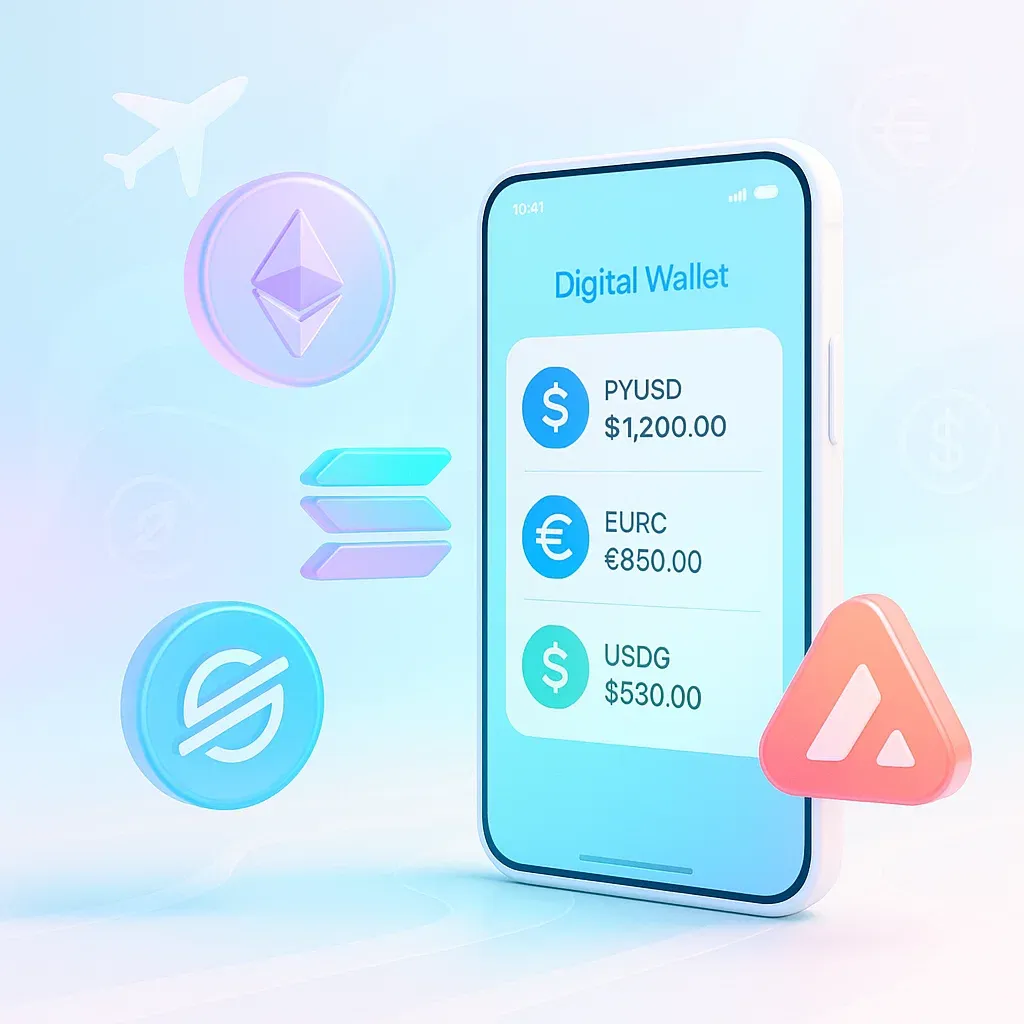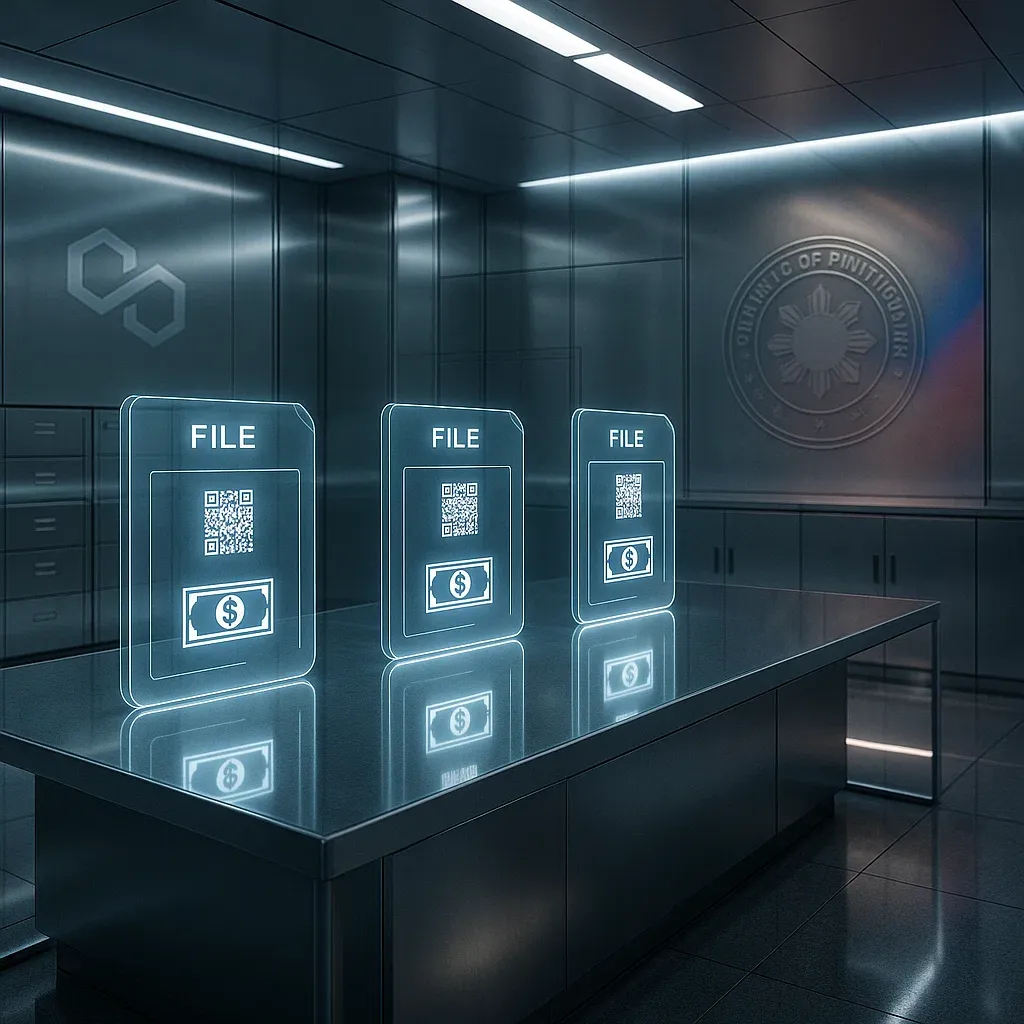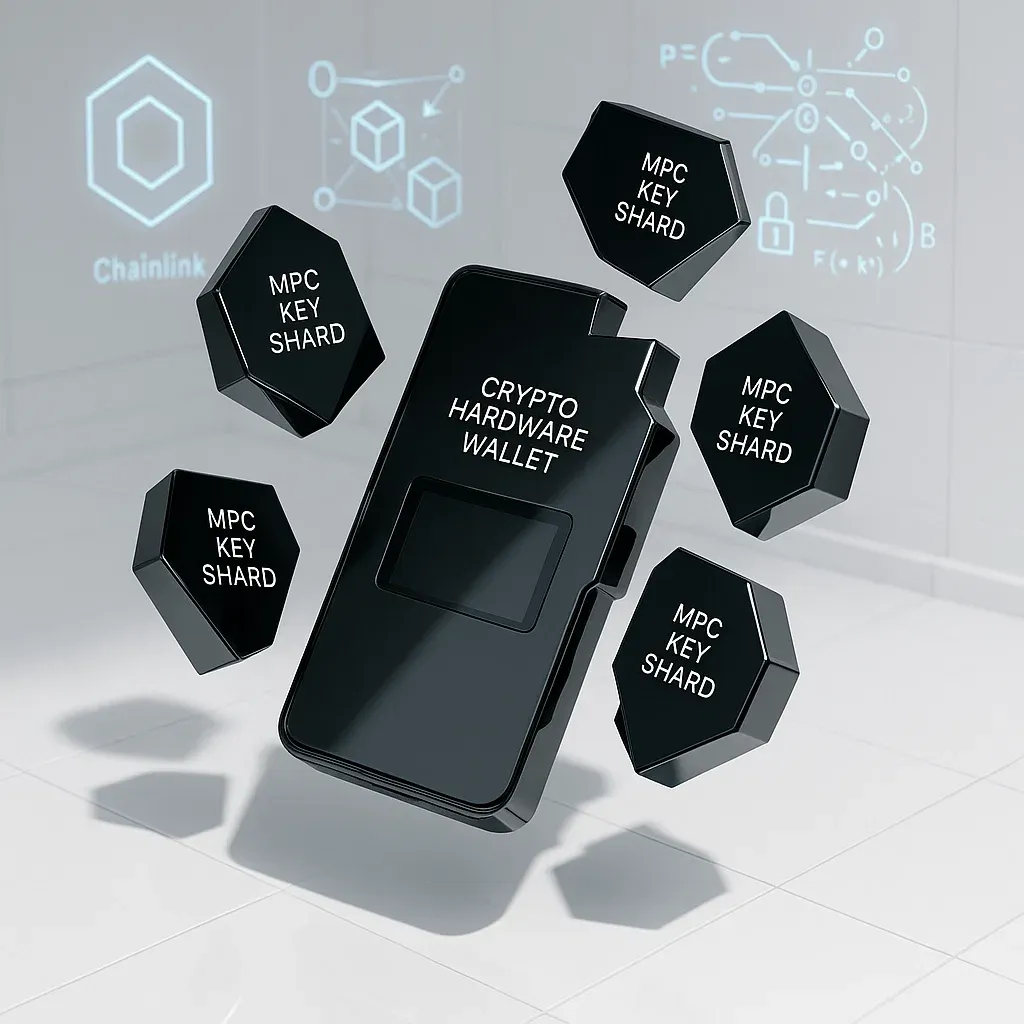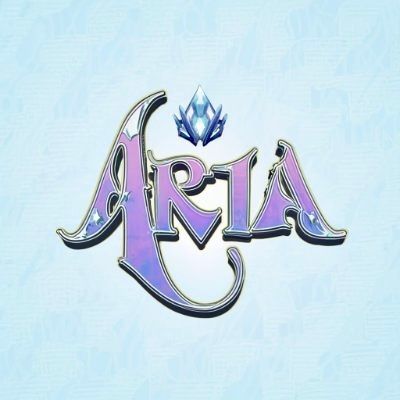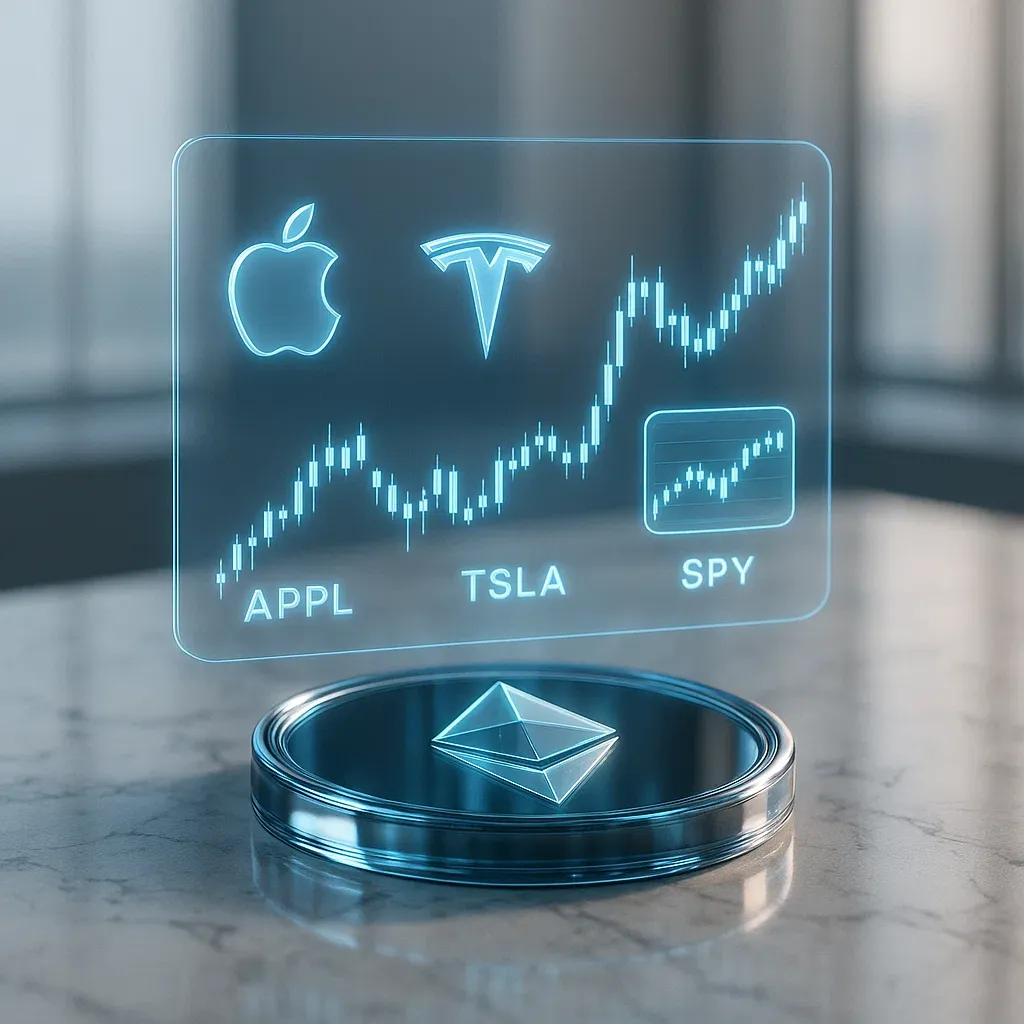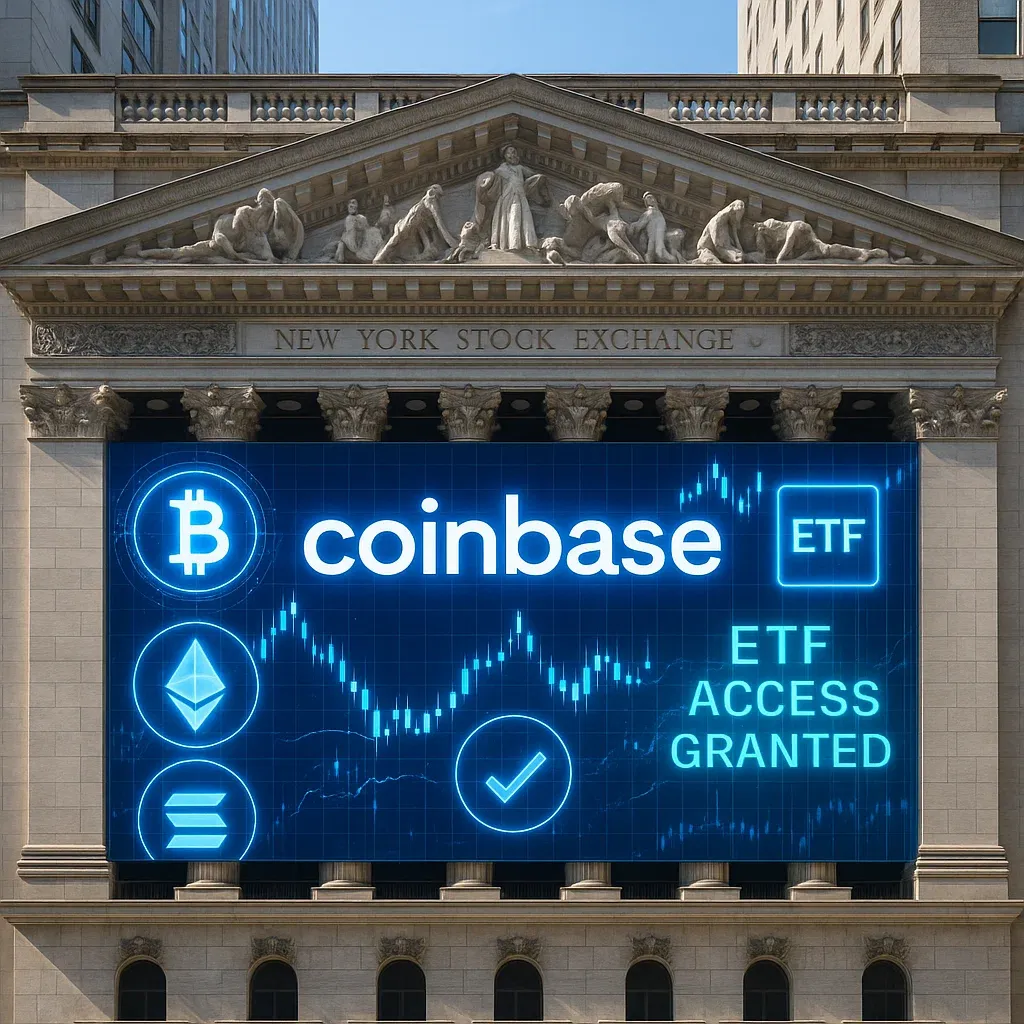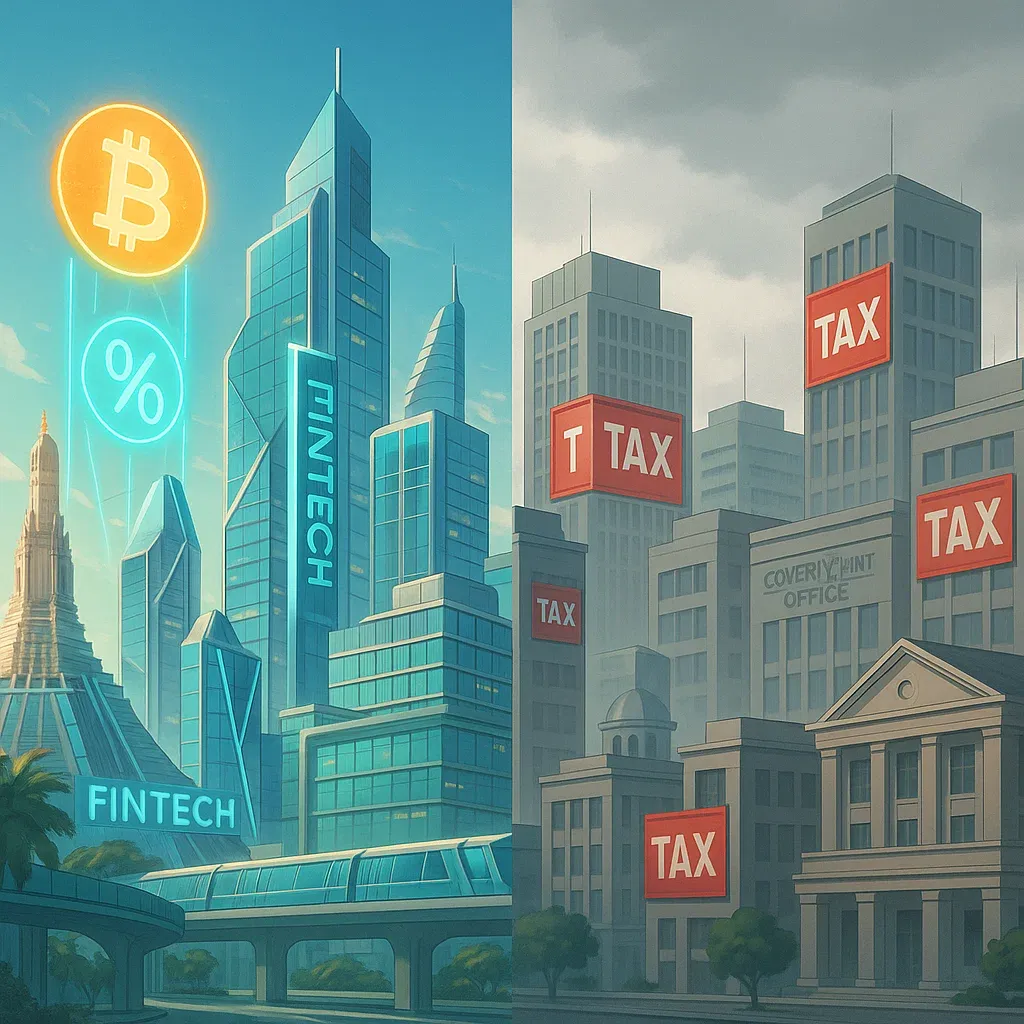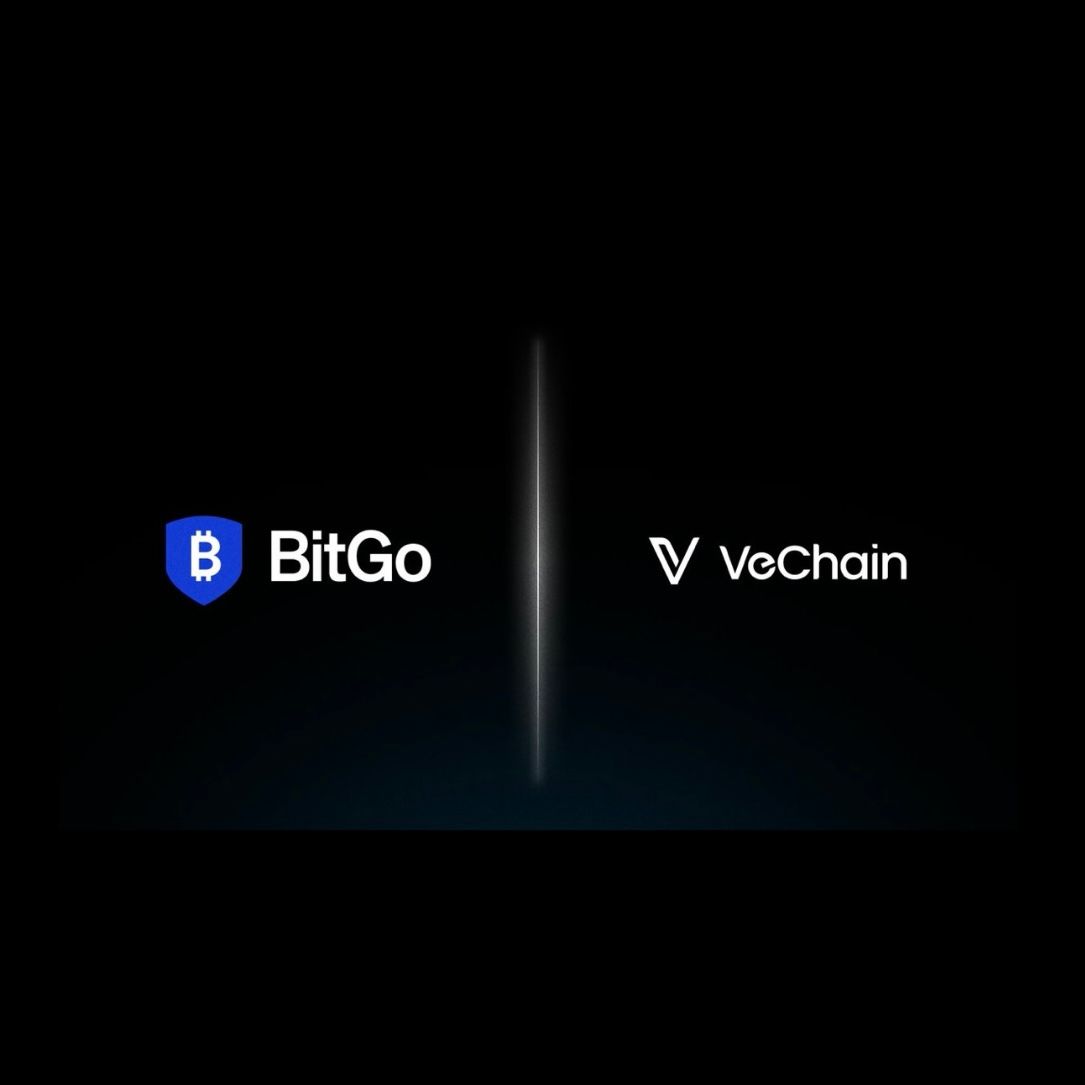Visa Expands Stablecoin Support with PYUSD, USDG, EURC on Multiple Blockchains
Visa Doubles Down on Stablecoins — Avalanche, Stellar, PYUSD Now in the Game
Cross-border payments just got an upgrade. Visa isn’t flirting with crypto anymore — it’s going all in.
🔍 Quick Facts
- 💵 New stablecoins added: PYUSD (PayPal), USDG (Global Dollar), EURC (Circle)
- 🌐 New chains live: Stellar and Avalanche, joining Ethereum + Solana
- 🧠 Visa now supports 4 stablecoins across 4 chains
- 📈 Goal: make stablecoin payments as fast, scalable, and secure as traditional cards
- 💬 “It’s about scale and utility,” says Visa’s Rubaiyat Birwadker
💳 Visa’s Blockchain Play Is Getting Real
Visa has officially upgraded its crypto settlement rails — and it’s not just Ethereum and USDC anymore.
As of July 31, the global payments giant now supports:
- PayPal’s PYUSD
- Global Dollar (USDG)
- Circle’s EURC
- Blockchain rails: Stellar, Avalanche, Ethereum, Solana
This move transforms Visa’s network into a multi-chain, multi-stablecoin settlement machine, capable of powering instant payments in both dollars and euros — all on-chain.
⚡ From Pilot to Global Infrastructure
Visa first dipped its toes into the stablecoin pool back in 2021 with a pilot using USDC on Ethereum, partnered with Crypto.com.
Fast-forward to now: the company is laying serious infrastructure. It’s not about “exploring Web3” anymore — it’s about building a backbone for global blockchain-powered settlements.
The goal? To move money across borders as fast and seamlessly as sending a meme.
🔁 Interoperability = The New Payment Standard
By backing four chains and multiple stablecoins, Visa is:
- 📲 Making it easier for wallets and fintechs to plug in
- 💱 Allowing real-time multi-currency settlements
- 🪙 Supporting Euro and USD with tokenized versions
Visa’s stablecoin strategy now spans:
- Crypto-native rails (Ethereum, Solana)
- Enterprise-focused chains (Stellar, Avalanche)
This is how crypto payments go mainstream — not through hype, but through invisible infrastructure that works.
🧠 Visa’s Vision: Stablecoins at Scale
According to Rubaiyat Birwadker, Visa’s head of product and partnerships:
“As stablecoins show real-world utility, we’re focused on giving them the scale and reliability of Visa’s network.”
In other words: Visa is building the plumbing for when stablecoins become standard.
Let’s not forget: Visa already settles in 25+ fiat currencies globally. Adding PYUSD, USDG, EURC is a natural (and strategic) extension — especially as regulatory clarity improves and payment apps start moving on-chain.
🧠 Why It Matters
Visa isn’t just enabling crypto payments — it’s institutionalizing them. This is the same company that moves trillions in fiat, now turning blockchains into settlement rails.
Whether you're in DeFi, TradFi, or just trying to send euros to your cousin in Brazil — this changes the game.
Stablecoins aren’t just for crypto bros anymore. They're becoming financial infrastructure.
TL;DR
- Visa added support for PYUSD, USDG, and EURC
- Now runs stablecoin settlements on Ethereum, Solana, Stellar, and Avalanche
- Pushes forward vision for multi-chain, fiat-backed crypto payments
- Visa’s strategy: make stablecoin payments invisible, scalable, and global
- This move could reshape global payments as we know them
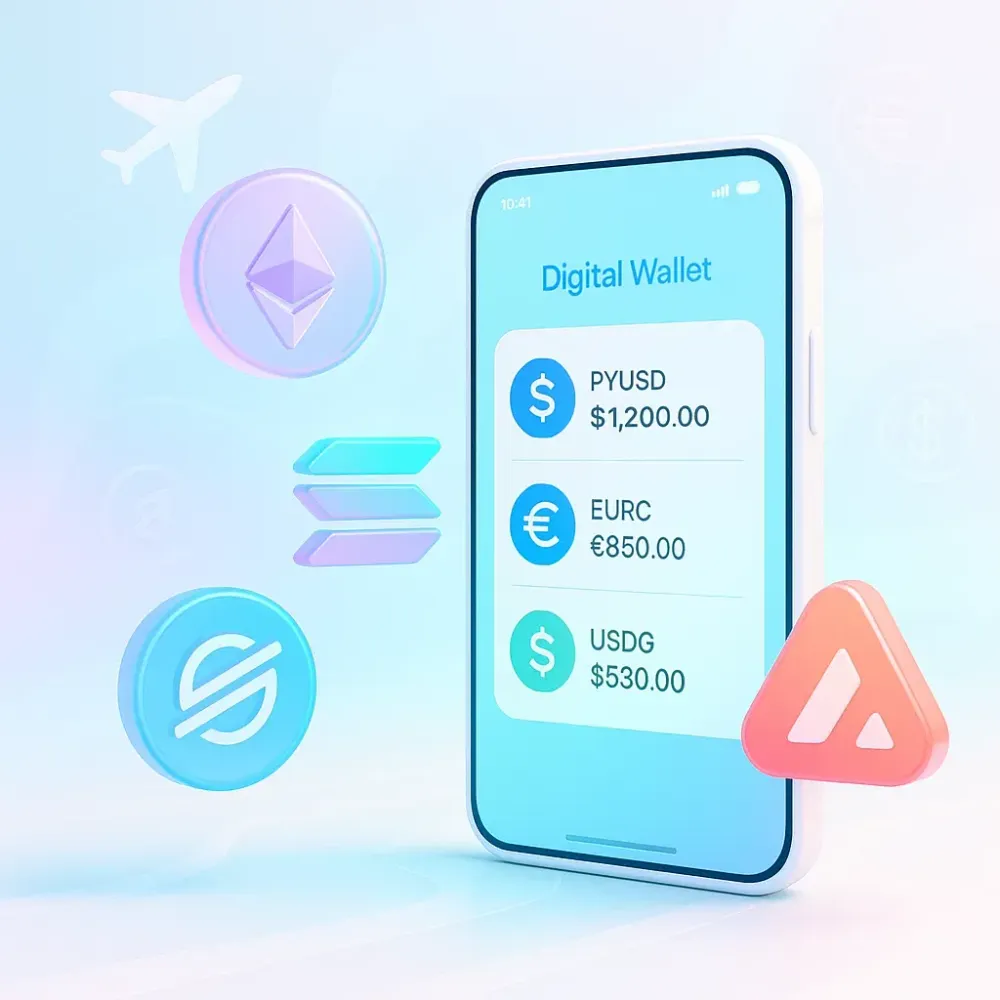
Recent News
All Time High • Live
Have questions or want to collaborate? Reach us at: info@ath.live
